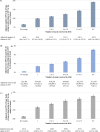Association between industry payments and prescriptions of long-acting insulin: An observational study with propensity score matching
- PMID: 34061852
- PMCID: PMC8205129
- DOI: 10.1371/journal.pmed.1003645
Association between industry payments and prescriptions of long-acting insulin: An observational study with propensity score matching
Abstract
Background: The rapidly increased spending on insulin is a major public health issue in the United States. Industry marketing might be one of the upstream determinants of physicians' prescription of long-acting insulin-the most commonly used and costly type of insulin, but the evidence is lacking. We therefore aimed to investigate the association between industry payments to physicians and subsequent prescriptions of long-acting insulin.
Methods and findings: Using the databases of Open Payments and Medicare Part D, we examined the association between the receipt of industry payments for long-acting insulin in 2016 and (1) the number of claims; (2) the costs paid for all claims; and (3) the costs per claim of long-acting insulin in 2017. We also examined the association between the receipt of payments and the change in these outcomes from 2016 to 2017. We employed propensity score matching to adjust for the physician-level characteristics (sex, years in practice, specialty, and medical school attended). Among 145,587 eligible physicians treating Medicare beneficiaries, 51,851 physicians received industry payments for long-acting insulin worth $22.3 million. In the propensity score-matched analysis including 102,590 physicians, we found that physicians who received the payments prescribed a higher number of claims (adjusted difference, 57.8; 95% CI, 55.8 to 59.7), higher costs for total claims (adjusted difference, +$22,111; 95% CI, $21,387 to $22,836), and higher costs per claim (adjusted difference, +$71.1; 95% CI, $69.0 to $73.2) of long-acting insulin, compared with physicians who did not receive the payments. The association was also found for changes in these outcomes from 2016 to 2017. Limitations to our study include limited generalizability, confounding, and possible reverse causation.
Conclusions: Industry marketing payments to physicians for long-acting insulin were associated with the physicians' prescriptions and costs of long-acting insulin in the subsequent year. Future research is needed to assess whether policy interventions on physician-industry financial relationships will help to ensure appropriate prescriptions and limit overall costs of this essential drug for diabetes care.
Conflict of interest statement
The authors have declared that no competing interests exist.
Figures


